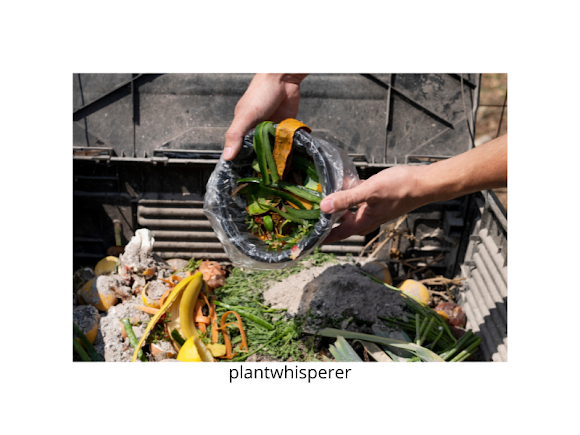 |
| Homemade Kitchen Waste Composting Guide |
Homemade Kitchen Waste Composting Guide
In this guide, we'll explore how to create homemade compost from kitchen waste, utilizing simple materials and methods for sustainable gardening practices.
1. Preparation:
- Use two 20-liter buckets.
- Drill multiple holes in the bottom of one bucket for drainage.
- Ensure proper testing to prevent fertilizer leakage.
- Gather various types of kitchen waste, including vegetable scraps, eggshells, and fruit peels.
- Cover the waste with compost to expedite decomposition.
2. Application of PSB (Photosynthetic Bacteria):
- Mix 3 bottle caps of PSB with 1.5 liters of water.
- Apply PSB mixture to reduce odors and aid in the decomposition process.
3. Composting Process:
- Place the compost bin under direct sunlight to accelerate decomposition.
- After 7 days, add more kitchen waste and cover with compost.
- After 9 days, repeat the process of adding waste and covering with compost.
- After 14 days, continue to add waste and cover with compost to expedite decomposition.
- After 30 days, mix the fertilizer every 2 to 3 days for faster decomposition.
4. Harvesting Liquid Fertilizer:
- After 60 days, the kitchen waste compost is ready for use as liquid fertilizer.
- Dilute the fertilizer at a ratio of 1:500 and apply to all plants for optimal growth.
5. Benefits of Homemade Compost:
- Enriches soil with essential nutrients, promoting healthy plant growth.
- Reduces waste sent to landfills, contributing to environmental sustainability.
- Improves soil structure and water retention, reducing the need for chemical fertilizers.
- Encourages beneficial microbial activity, enhancing soil health and plant resilience.
6. Application Tips:
- Apply compost to the base of plants, avoiding direct contact with stems or leaves.
- Use compost as a top dressing for potted plants or incorporate it into garden beds.
- Monitor plant response and adjust application rates accordingly to avoid over-fertilization.
7. Closing Note: By following this simple guide, you can transform kitchen waste into a valuable resource for your garden, while reducing your environmental footprint. Thank you for joining us on this journey towards sustainable gardening practices. God bless you and happy gardening!
Conclusion: Homemade kitchen waste composting is an eco-friendly and cost-effective way to nourish your plants and promote sustainable gardening practices. Thank you for watching, and may your gardening endeavors be blessed with success!
Table: Kitchen Waste Composting Timeline
| Day | Activity |
|---|---|
| Day 1 | Prepare compost bins and drill drainage holes |
| Day 2-6 | Gather and accumulate kitchen waste |
| Day 7 | Add kitchen waste, cover with compost |
| Day 9 | Add more kitchen waste, cover with compost |
| Day 14 | Continue adding waste, cover with compost |
| Day 30 | Mix compost every 2-3 days for faster decomposition |
| Day 60 | Harvest liquid fertilizer from compost |
This timeline outlines the key activities and milestones in the kitchen waste composting process, ensuring efficient decomposition and nutrient-rich fertilizer production.

